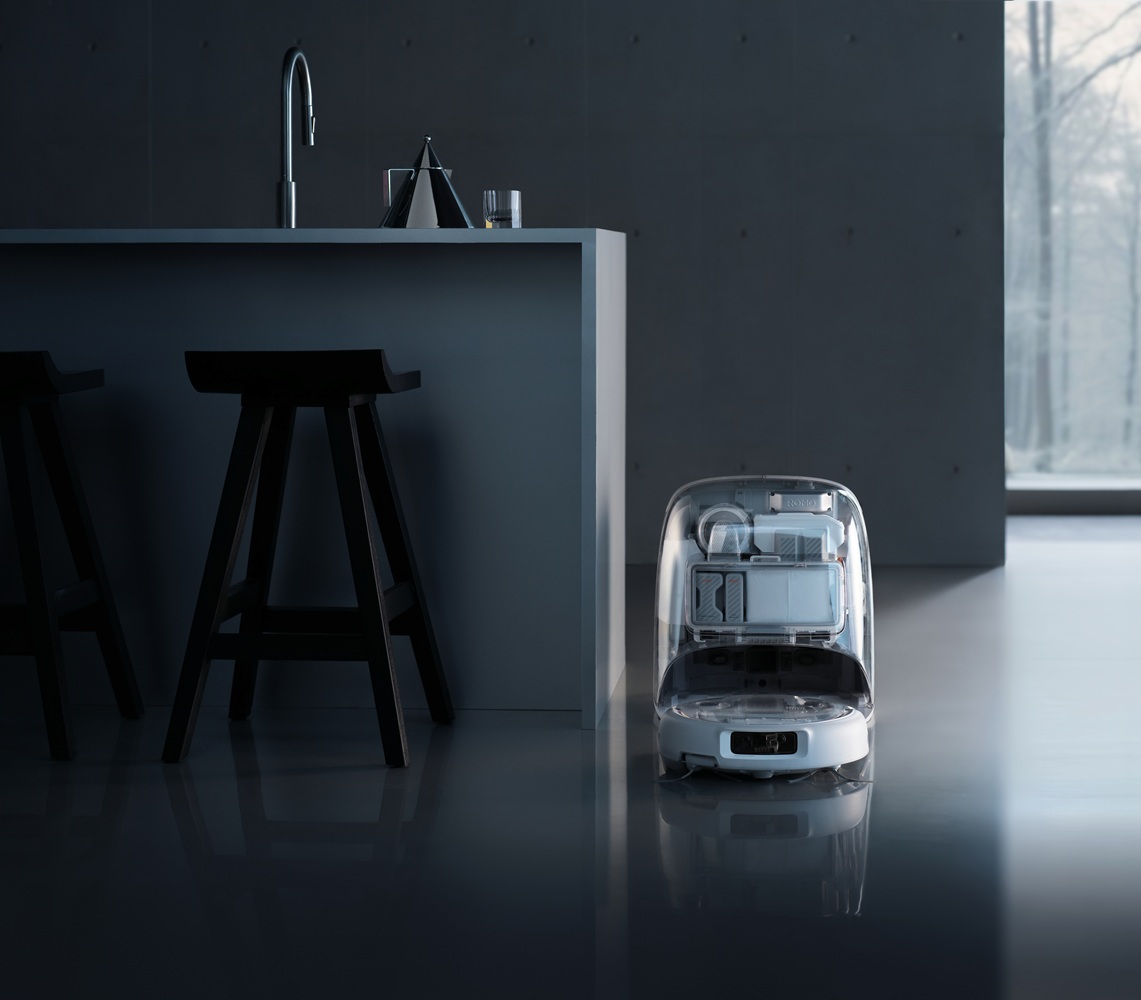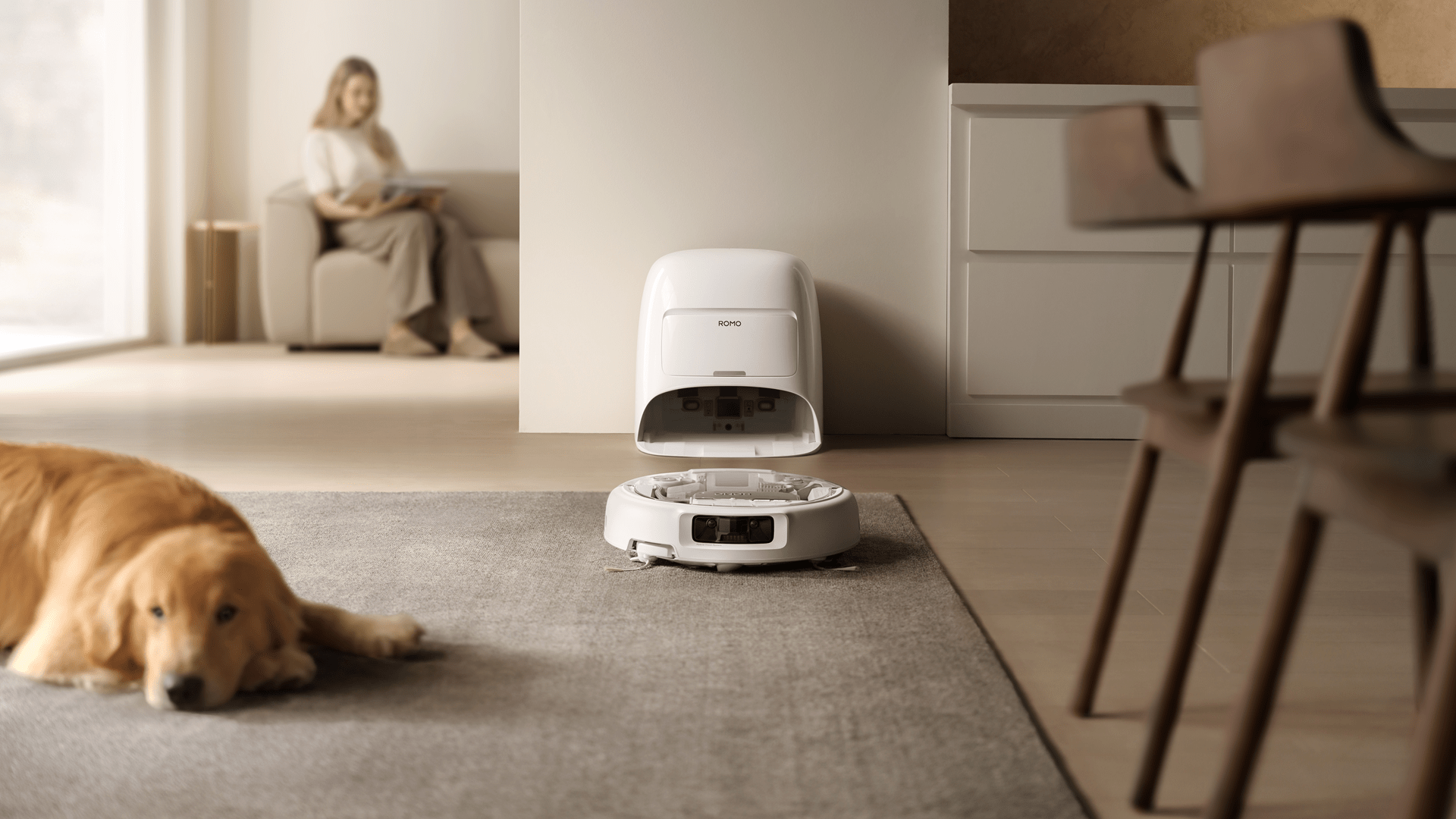- DJI’s New Romo Vacuum Uses AI-Driven Vision and Decision-Making for Home Cleaning
- The robot uses drone-grade sensors and real-time path planning to adapt to each room
- Romo’s high price and limited smart home integration could prevent it from dethroning Roborock globally.
DJI, a company known for putting autonomous flying machines in the sky, is now pointing its AI at the mess in your home. The company’s first line of robot vacuums, Romo, is officially rolling out in Europe this week – although these are selected markets for now, with no shared timeline for the UK. And while it’s marketed as a premium cleaning device, it also shows how DJI is working to bring AI-based tools to the ground as well as the sky.
The three Romo models, S, A, and P, range from $1,299 to $1,899 and include features you’d expect from a high-end robot cleaner, like a self-draining base, obstacle detection, cleaning and deodorizing capabilities, and almost-scary levels of suction. But it’s arguably the intelligence under the hood that defines the Romos, especially the kind derived from DJI’s years of work in drone navigation.
The Romo’s machine learning features allow it to mimic the kind of adaptation and planning needed to clean a house. The software learns the layout of a house as it moves through it, observing with two fisheye vision sensors and solid-state LiDARs, aided by edge-aware depth algorithms. This means it can predict collisions in advance and avoid them by recognizing obstacles ranging from uneven furniture and cables to pieces of dog food.
It’s not difficult to connect the dots of DJI’s drone technology in a vacuum. Making split-second decisions in unstable and rapidly changing environments is what autonomous drones must do all the time. It’s probably easier to avoid a playing card than it is to avoid a small bird moving through the air.
This is also why other smart vacuum manufacturers are likely keeping an eye on Romo. Most robot vacuums can do basic mapping and avoid obstacles. Some can even clean or recognize coin types. But Romo offers a more complex understanding of the environment and how a house can look different from one minute to the next.
The vacuum device even changes its brush rotation when it detects debris like trash or food, applying more targeted suction while slowing down to avoid scattering. These behaviors aren’t hard-coded rules either; they are based on feedback from internal algorithms. And the two flexible arms extend or retract based on AI-based interpretation of edge geometry, not just bump detection.
And there’s a glimpse of the cinema that DJI drones are known for in video feeds from Romo’s onboard sensors. Owners can use them to remotely check in on pets or children, although this requires two-factor authentication and uses encrypted transmission for privacy reasons.
AI Void Battle

Even Romo’s self-cleaning base station works on the principle of minimizing human intervention, capable of dosing a cleaning solution or deodorizer depending on the type of room.
However, whether DJI’s software lives up to its hardware remains an open question. The DJI Home app isn’t as well integrated into smart home ecosystems as Apple HomeKit or Alexa Routines. For such a smart vacuum cleaner, isolation feels like a missed opportunity. Still, you control the smart routines, cleaning zones, and AI-generated maps, so there’s not much missing per se.
However, DJI is unlikely to threaten Roborock’s throne in the short term. Romo’s price is high, even for powerful cleaners, and it is not yet widely available worldwide. Their appeal is aimed at tech enthusiasts, early adopters, and die-hard DJI fans, but everyday consumers may be hesitant to spend $1,899 for something that cleans slightly better than a $799 competitor. These are currently selected markets in Europe, with no shared plans for a US launch at this time.
However, Romo doesn’t look like a volume play. Rather, it’s a way for DJI to show that the same fundamental technology used to fly drones, stabilize cameras, and track athletes can also analyze your floor and decide whether that clump of fuzz is dust or dog hair.
DJI may be planning a full AI-driven consumer robotics rollout, with Romo as a test. So while Roborock doesn’t have to worry about Romo taking away all his customers, he does have to keep an eye on the future that’s emerging now. Because if there’s one thing DJI technology is good at, it’s navigating a map.
Follow TechRadar on Google News And add us as your favorite source to get our news, reviews and expert opinions in your feeds. Make sure to click the Follow button!
And of course you can too follow TechRadar on TikTok for news, reviews, unboxings in video form and receive regular updates from us on WhatsApp Also.




